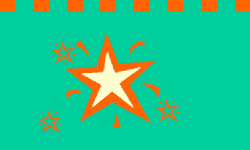CAVE is an eloquent, rhymed-verse narrative poem told in first-person by the cave itself. Through the repetition of the
phrase “I am the cave” Siebert takes the reader on a journey through the cave’s formation, meeting the creatures
living within it along the way. Siebert’s rhyming style works well in the sense that it conveys a sense of mystery and
reverence in its structure. However, as Shelley Townsend-Hudson points out in Booklist, “At times, the poetic
format makes delivery of information awkward.” Siebert makes a noble effort, as the subject matter is dense. She presents
tough concepts in interesting ways, such as the phrase repeated at the beginning and end of the poem, “…a crystal
world from weeping stone.” She seems to choose just the right words in this case to describe not only the dripping water,
but also the strange sparkle and drippy look of the formations.
This book is a great introduction to the formation of caves and it is presented in a way so as to allow a sense of wonder
and awe shine through. One will not find this kind of interest in a science book entry on caves. What a great argument for
the use of trade literature in the science classroom! If only I had had the opportunity to explore this book before going
to underground caverns in Texas on a seventh grade field trip. The poem creates a kind of experience that helps provide a
frame of reference for the real thing.
The vocabulary is dense, but decipherable. Lee Bock says in School Library Journal, “Siebert’s vocabulary
is at once challenging and understandable in context.” This can be true for older students, or intermediate ones who
experience this book with an adult. However, School Library Journal’s recommendation for Grades 1-4 seems a little
young to me. A first grader may be interested in the topic, the pictures, and the rhyming pattern, but it would take much
explanation to truly understand the book. Siebert provides a pronunciation guide at the end of the book, along with her thanks
to the Department of Earth and Planetary Sciences at the American Museum of Natural History in New York City for their help.
In the author’s note, Siebert gives a kind of broad sweeping explanation of the formation of caves, in layman’s
terms. She reminds the readers that human hands can ruin caves. This is a worthy message to impart, but together with the
warning in the poem, it comes across in a slightly heavy-handed way.
The subject of caves presents a challenge to the artist considering the lighting situations. The first painting is eerie
and mysterious in its purples and blues, and accurately gives a sense of shadowy darkness. The pale salamanders and the luminous
spider shine among glittering drops of water. Only the cave painting illustration seems forced since it is revealed on a seemingly
dry, flat wall of oranges and grays. It is a bit confusing considering all of the previous illustrations show wet, bumpy walls
in blues and purples. However, the overall combination of the art and the words creates a reverent and intriguing look at
the world inside of a cave.
Bock, Lee. 2000. Review of Cave in School Library Journal.
Townsend-Hudson, Shelley.2000. Review of Cave in Booklist.

